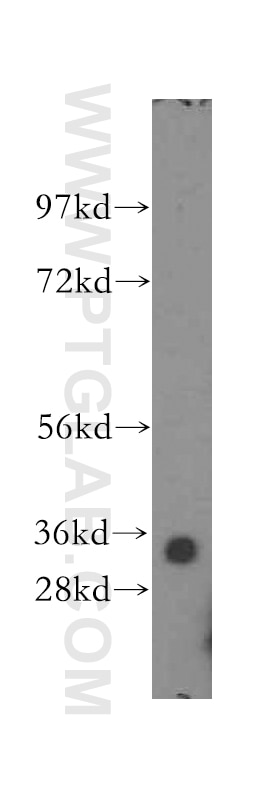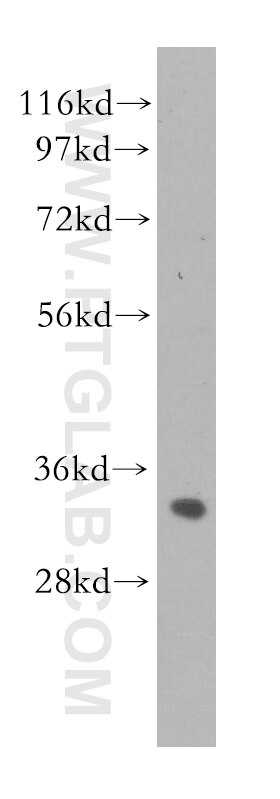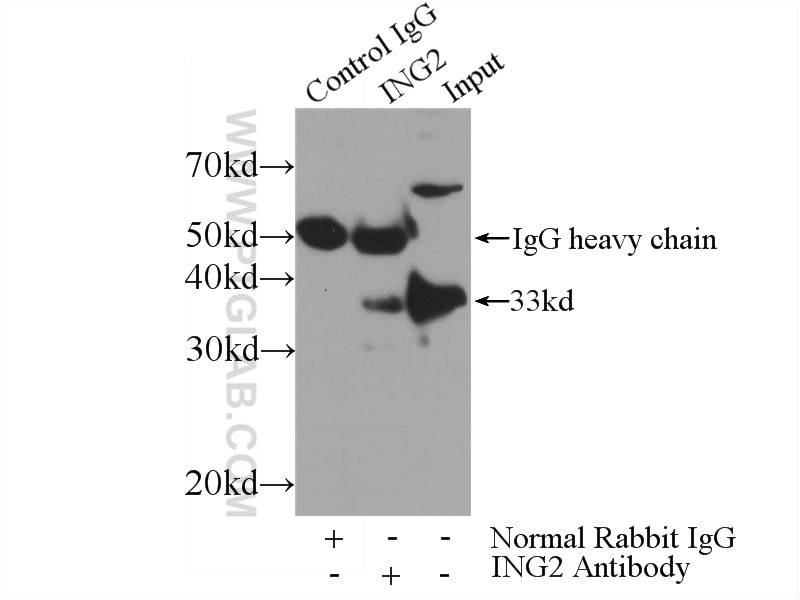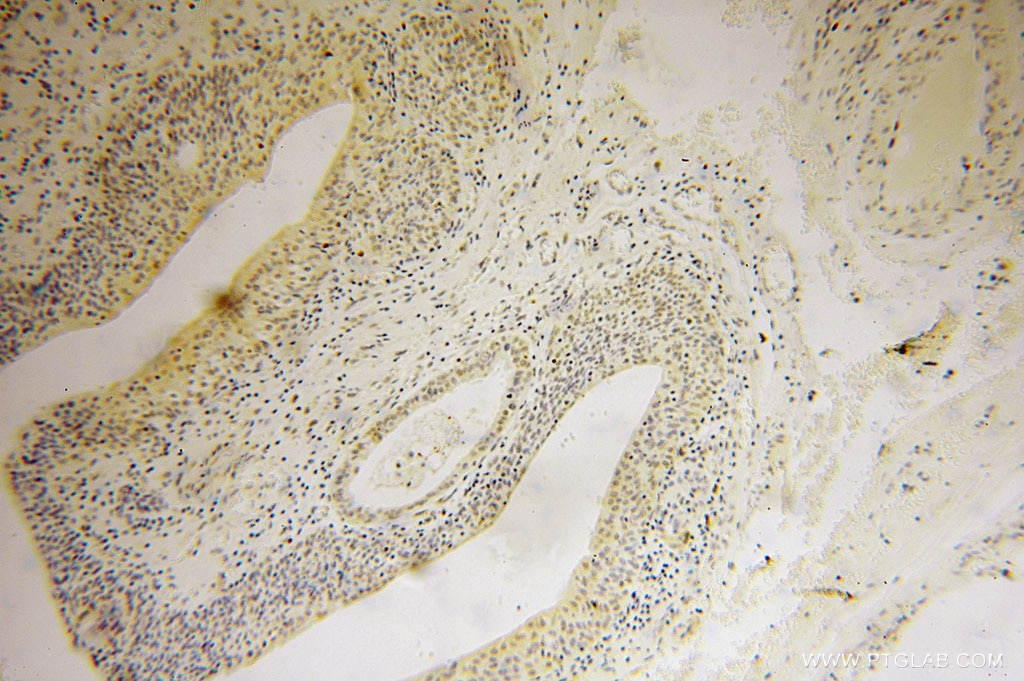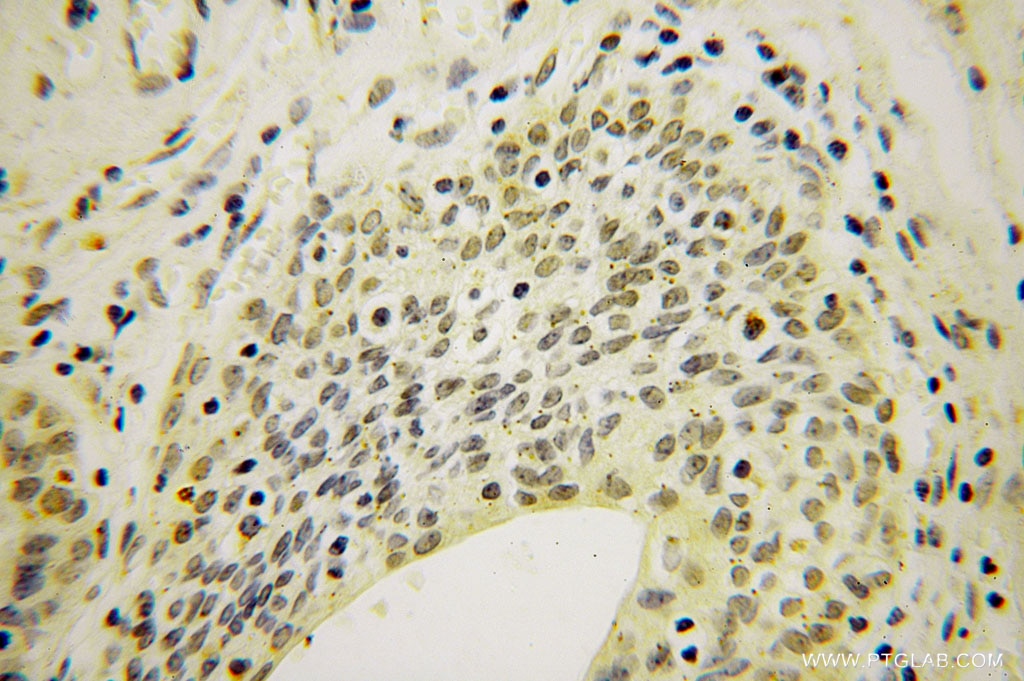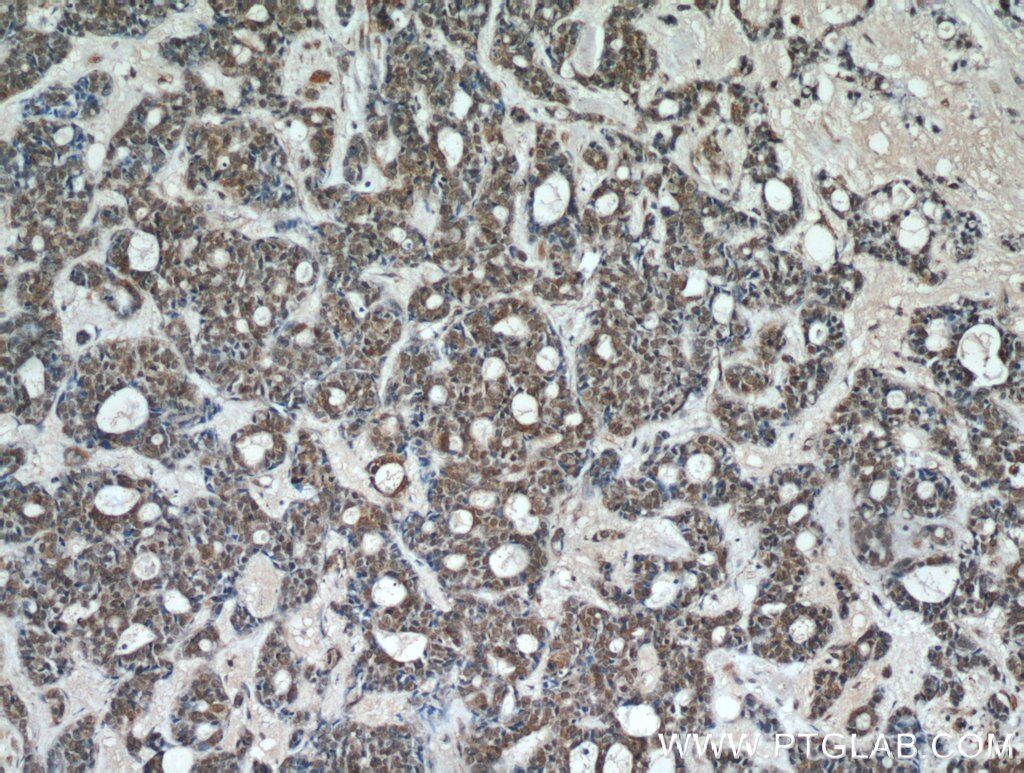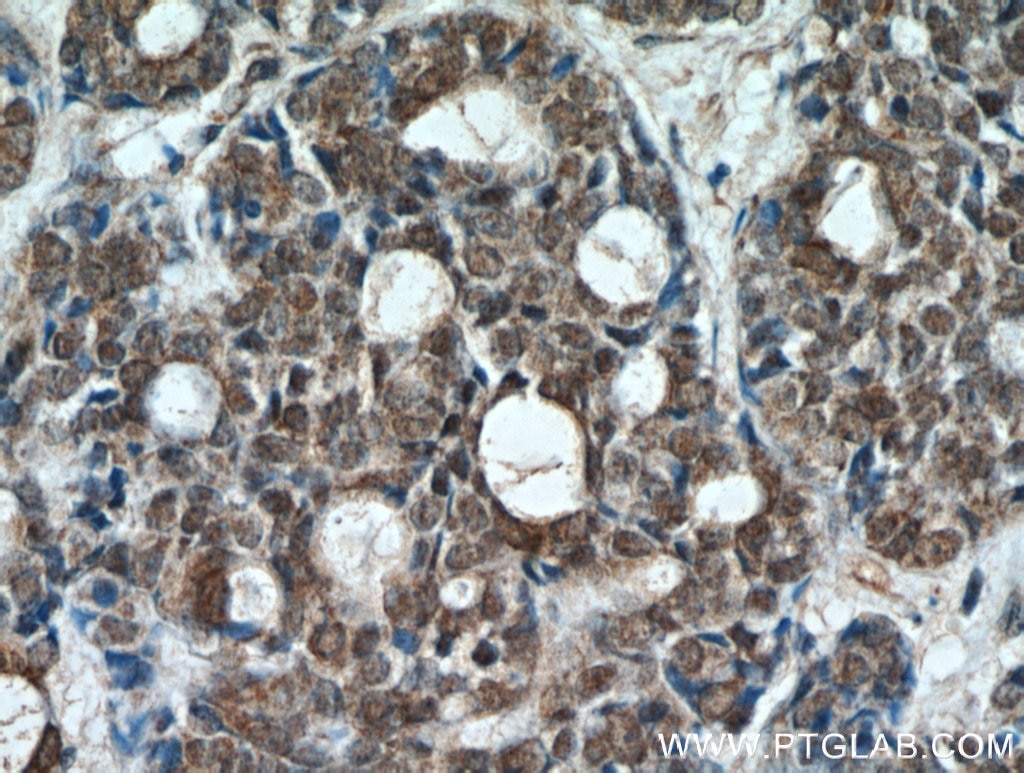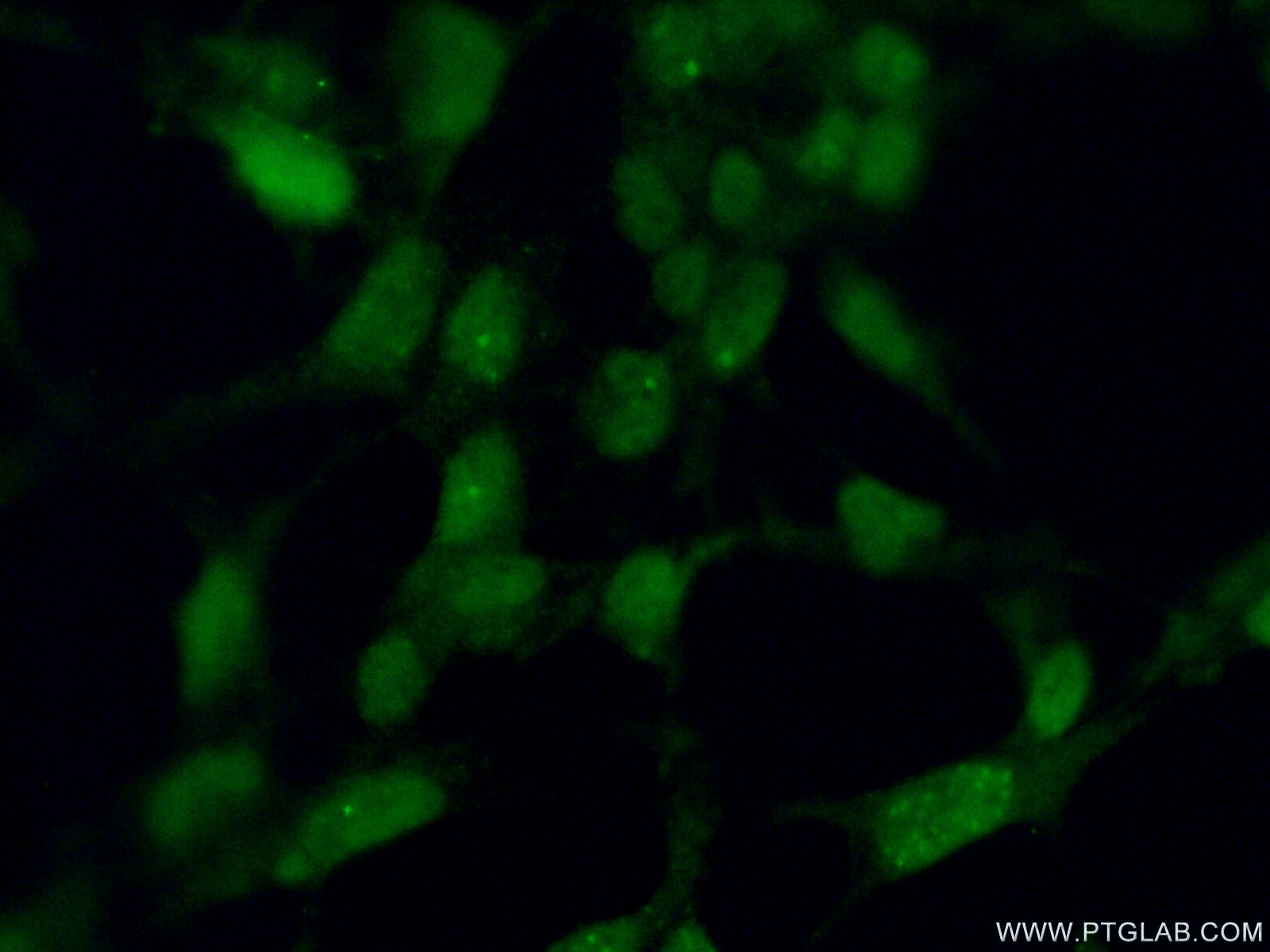- Phare
- Validé par KD/KO
Anticorps Polyclonal de lapin anti-ING2
ING2 Polyclonal Antibody for WB, IP, IF, IHC, ELISA
Hôte / Isotype
Lapin / IgG
Réactivité testée
Humain, rat, souris
Applications
WB, IHC, IF/ICC, IP, ELISA
Conjugaison
Non conjugué
N° de cat : 11560-1-AP
Synonymes
Galerie de données de validation
Applications testées
| Résultats positifs en WB | cellules HEK-293, tissu hépatique humain |
| Résultats positifs en IP | cellules HEK-293 |
| Résultats positifs en IHC | tissu de cancer du côlon humain, tissu de cancer du col de l'utérus humain il est suggéré de démasquer l'antigène avec un tampon de TE buffer pH 9.0; (*) À défaut, 'le démasquage de l'antigène peut être 'effectué avec un tampon citrate pH 6,0. |
| Résultats positifs en IF/ICC | cellules HEK-293 |
Dilution recommandée
| Application | Dilution |
|---|---|
| Western Blot (WB) | WB : 1:500-1:1000 |
| Immunoprécipitation (IP) | IP : 0.5-4.0 ug for 1.0-3.0 mg of total protein lysate |
| Immunohistochimie (IHC) | IHC : 1:20-1:200 |
| Immunofluorescence (IF)/ICC | IF/ICC : 1:50-1:500 |
| It is recommended that this reagent should be titrated in each testing system to obtain optimal results. | |
| Sample-dependent, check data in validation data gallery | |
Applications publiées
| KD/KO | See 3 publications below |
| WB | See 7 publications below |
| IHC | See 3 publications below |
| IF | See 1 publications below |
| IP | See 1 publications below |
Informations sur le produit
11560-1-AP cible ING2 dans les applications de WB, IHC, IF/ICC, IP, ELISA et montre une réactivité avec des échantillons Humain, rat, souris
| Réactivité | Humain, rat, souris |
| Réactivité citée | Humain, souris |
| Hôte / Isotype | Lapin / IgG |
| Clonalité | Polyclonal |
| Type | Anticorps |
| Immunogène | ING2 Protéine recombinante Ag2121 |
| Nom complet | inhibitor of growth family, member 2 |
| Masse moléculaire calculée | 280 aa, 33 kDa |
| Poids moléculaire observé | 33 kDa |
| Numéro d’acquisition GenBank | BC030128 |
| Symbole du gène | ING2 |
| Identification du gène (NCBI) | 3622 |
| Conjugaison | Non conjugué |
| Forme | Liquide |
| Méthode de purification | Purification par affinité contre l'antigène |
| Tampon de stockage | PBS avec azoture de sodium à 0,02 % et glycérol à 50 % pH 7,3 |
| Conditions de stockage | Stocker à -20°C. Stable pendant un an après l'expédition. L'aliquotage n'est pas nécessaire pour le stockage à -20oC Les 20ul contiennent 0,1% de BSA. |
Informations générales
ING2, also named as ING1L, belongs to the ING family and contains a PHD-type zinc finger. It is induced by the DNA-damaging agent neocarzinostatin. As a candidate tumor suppressor, ING2 seems to be involved in p53/TP53 activation and p53/TP53-dependent apoptotic pathways, probably by enhancing acetylation of p53/TP53. It is a component of a mSin3A-like corepressor complex, which is probably involved in deacetylation of nucleosomal histones. Recent finding reported that ING2 regulates muscle differentiation by regulating chormatin remodeling program. Catalog#11560-1-AP is a rabbit polyclonal antibody raised against full length ING2 of human origin.
Protocole
| Product Specific Protocols | |
|---|---|
| WB protocol for ING2 antibody 11560-1-AP | Download protocol |
| IHC protocol for ING2 antibody 11560-1-AP | Download protocol |
| IF protocol for ING2 antibody 11560-1-AP | Download protocol |
| IP protocol for ING2 antibody 11560-1-AP | Download protocol |
| Standard Protocols | |
|---|---|
| Click here to view our Standard Protocols |
Publications
| Species | Application | Title |
|---|---|---|
Mol Cell Proteomics Human family with sequence similarity 60 member A (FAM60A) protein: a new subunit of the Sin3 deacetylase complex. | ||
Chem Biol Deacetylase inhibitors dissociate the histone-targeting ING2 subunit from the Sin3 complex.
| ||
Cancers (Basel) Antithetic hTERT Regulation by Androgens in Prostate Cancer Cells: hTERT Inhibition Is Mediated by the ING1 and ING2 Tumor Suppressors.
| ||
Front Cell Dev Biol ING2 Controls Mitochondrial Respiration via Modulating MRPL12 Ubiquitination in Renal Tubular Epithelial Cells.
| ||
Cancer Lett Decreased expression of ING2 gene and its clinicopathological significance in hepatocellular carcinoma. | ||
Biochem J Histone H3 N-terminal mimicry drives a novel network of methyl-effector interactions. |
